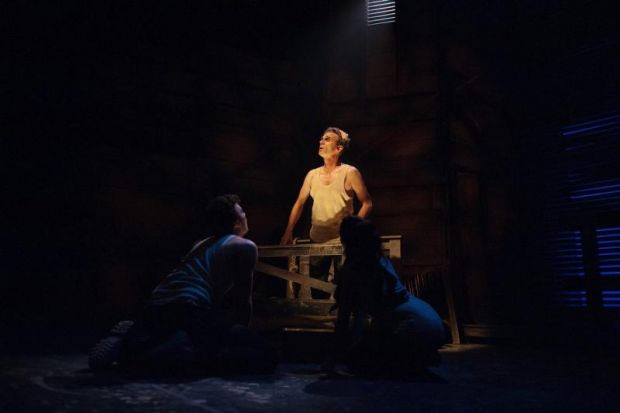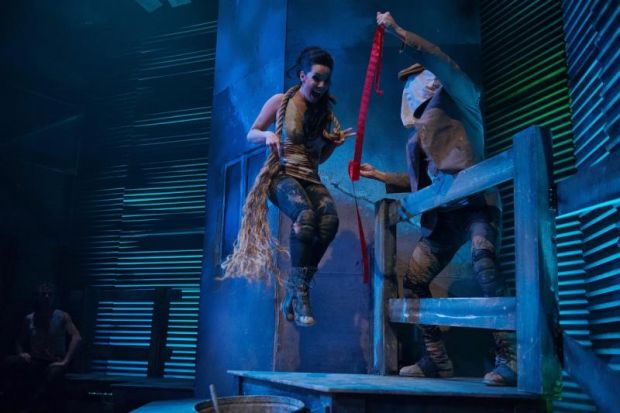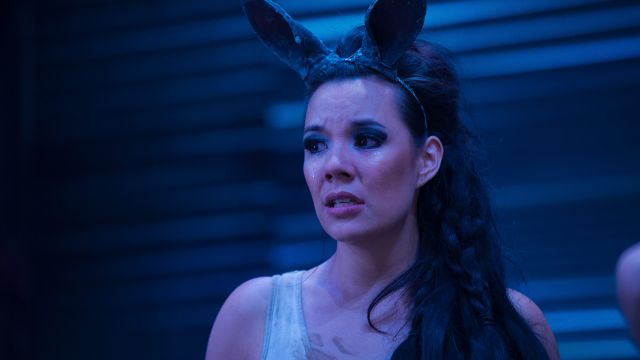Animal Farm
In this era of Trump, war in Israel, post-Brexit blues and an increasing gap between rich and poor, shake & stir’s adaptation of the Orwell classic Animal Farm is as timely as it is colourful and thought provoking. While no less dark than Orwell’s 1984, Animal Farm is made less horrifying and more accessible by its fairy-tale setting of anthropomorphic farm animals. This rewrite is true to Orwell’s political and ethical clarity, retelling in a way entertaining to adults and children alike the story of the Russian Revolution and early Soviet Union, and how the ideals of Marxism became opportunistically corrupted by greedy pigs.
Nick Skubij’s adaptation makes use of Orwell’s spare prose style, interspersing action with segments of narration. The prose is beguilingly rhythmic and perfectly edited: there is not one unnecessary word. Those points of explication don’t bog down the action in the least but serve to nest the story in the fable-telling genre. In fact, the musicality of the language is echoed by the dance-like gait and movement of the animals, which both transfix the viewer and form an important part of characterisation.

The 6 actors share 40 animal roles, and in spite of identical costumes are easily differentiated by posture, expression, movement style and voice characterisation. Gideon Mzembe’s old cart horse Boxer’s slow stoic work march for instance was utterly different from Nelle Lee’s Clover, who moved in a jauntier trot, and Nelle Lee’s Molly, a prim pony given to high-hoofed trots and excited leaps. Old donkey Benjamin’s painful, slow syncopated lope and grimace, Squealer’s hunched sneaking, Napoleon’s imperious stride and Snowball’s earnest walk made these characters immediately recognisable. The fight choreography was strong and stylised, with high throws and acrobatic tumbling. The stage was in constant motion as the animals talked, worked and fought, and the movement was so co-ordinated and energetic that it seemed like there were many more than just 6 players on the stage. Pairing this with a vibrant, gothic set of dark primary colours and moody shadow, an excellent sound design and flawless pacing building steadily to the climax made this excellent physical theatre. They even had space for a bitterly dry humour—the counter-rebellion by the hens was very funny, if ultimately tragic.

The entertainment value of the show will make the didacticism an easy swallow for teens and it would make an excellent excursion. For the rest of us, it provides wonderful intellectual distraction from watching bizarre conspiracy theories gain traction, democracies degrade, and the world as we know it crumbling in a climate change-driven nightmare.
Cathy Bannister
Photographer: Dylan Evans.
Subscribe to our E-Newsletter, buy our latest print edition or find a Performing Arts book at Book Nook.

